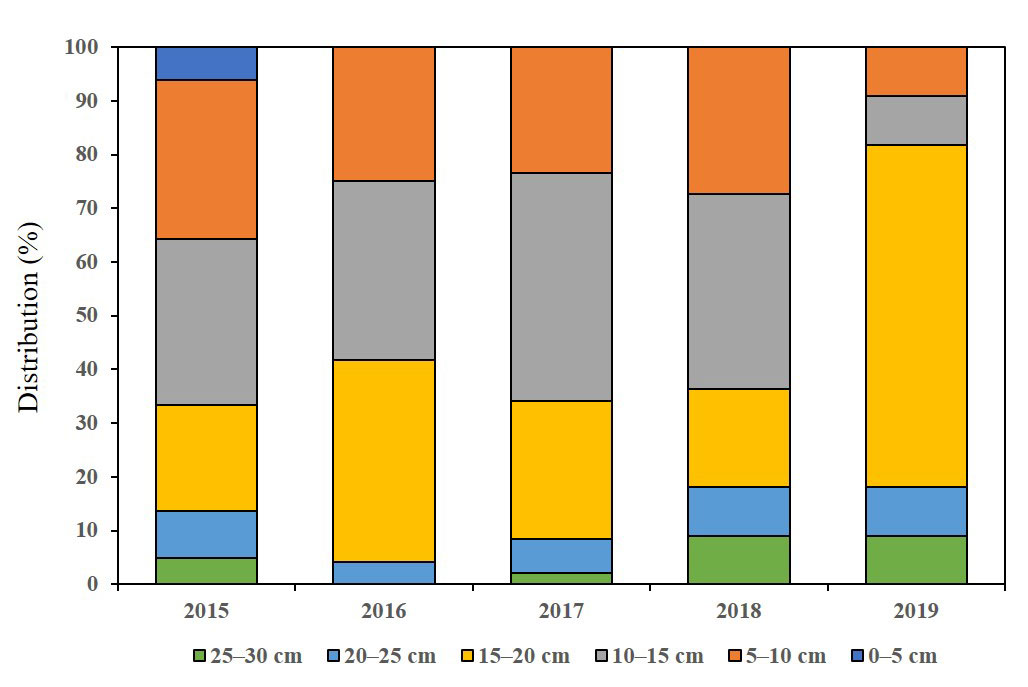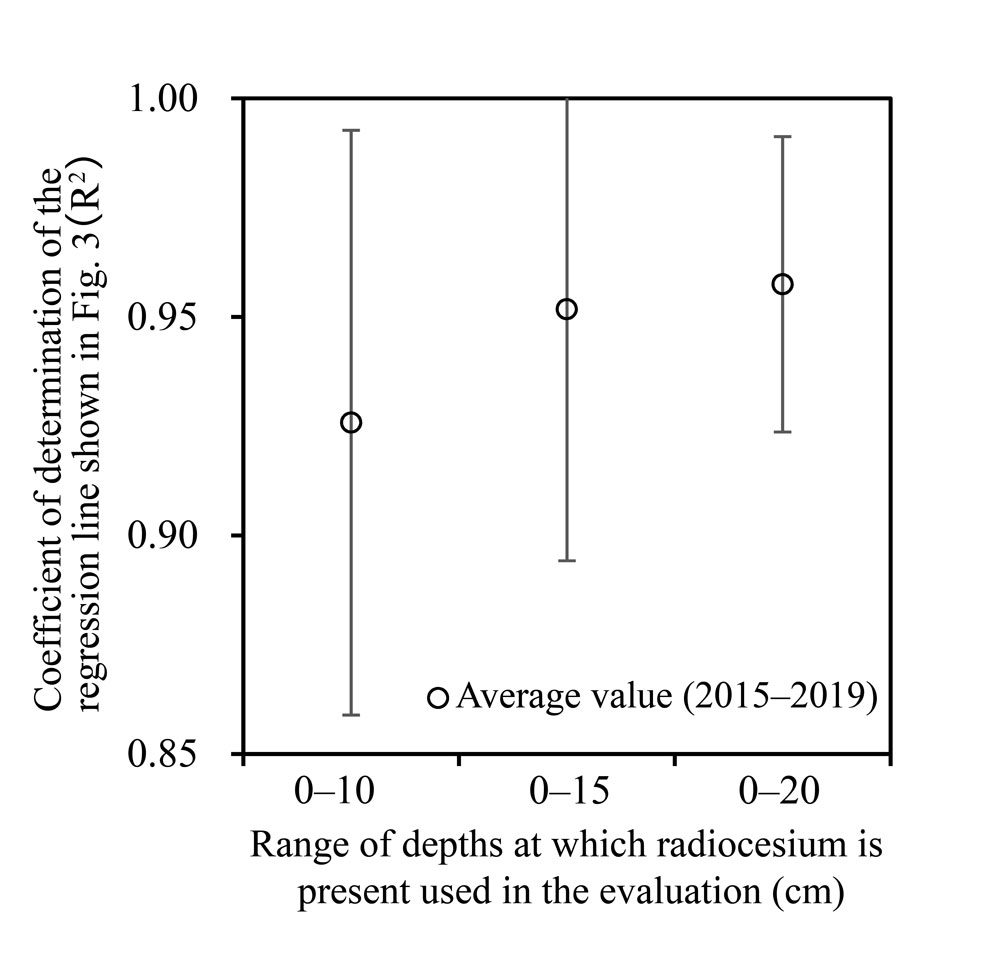 |
Topics
Toward In-Situ Evaluation of Radiocesium Distribution in Irrigation Pond
−Effects of Changes in Depth Distribution of Radiocesium in Bottom Sediment Over Time−

Fig. 1 Radiocesium measurements at the bottom of the pond using a plastic scintillation fiber (PSF) technique

Fig. 2 Percentage of distribution at 90 % depth (depth from the surface at which 90 % of the total amount of
radiocesium in the bottom sediment is contained) of all bottom sediment sampled in the irrigation pond

Fig. 3 Example of comparison between the counting rate obtained by the PSF technique and the average
concentration of radiocesium in the bottom sediment from 0–15 cm sampled at that measurement point

Fig. 4 Relationship between depth of interest and coefficient of determination of the regression line shown in Fig. 3
The conversion factor is needed to convert the γ-ray count rate obtained by placing the PSF statically at the bottom of a pond (Fig. 1) into radiocesium concentration, and this factor has conventionally been set assuming that radiocesium was distributed mainly on the 10-cm thick surface layer of the bottom sediment. However, it has been suggested that the depth distribution of radiocesium in bottom sediments may change over time.
In this study, we examined the necessity of evaluating radiocesium concentrations considering changes in the depth distribution of radiocesium. Sediment sampling in 2015–2019 showed that 90 % of radiocesium was contained decreased over time with cases distributed at 10 cm from the surface and increased over time with cases distributed at 15 and 20 cm from the surface (Fig. 2). Since 2015, a strong correlation between PSF count rates and radiocesium concentrations in bottom sediments was observed when 15 or 20 cm from the surface of the sediment were considered (Fig. 3), which is consistent with the trend in Fig. 2. However, even when only 10 cm from the surface were considered, a coefficient of determination was obtained that maintained sufficient accuracy (Fig. 4). After 5 years after the accident, a conversion factor that considers changes in the depth distribution of radiocesium is expected to improve the estimation accuracy even further.
Acknowledgements
This study is a part of the results titled “Technical Guidance on Measurement Methods of Radiation Distribution in Water Beds,” a research commissioned by the Fukushima Prefecture Federation of Land Improvement Associations.
Author (Researcher) Information
 | Name | Kotaro Ochi |
|---|---|
| Environmental Monitoring Research Group, Collaborative Laboratories for Advanced Decommissioning Science (CLADS), Fukushima Research and Engineering Institute |
Reference
March 31, 2025
Research and Development Related to the Accident at TEPCO's Fukushima Daiichi NPS [R&D for environmental restoration]
